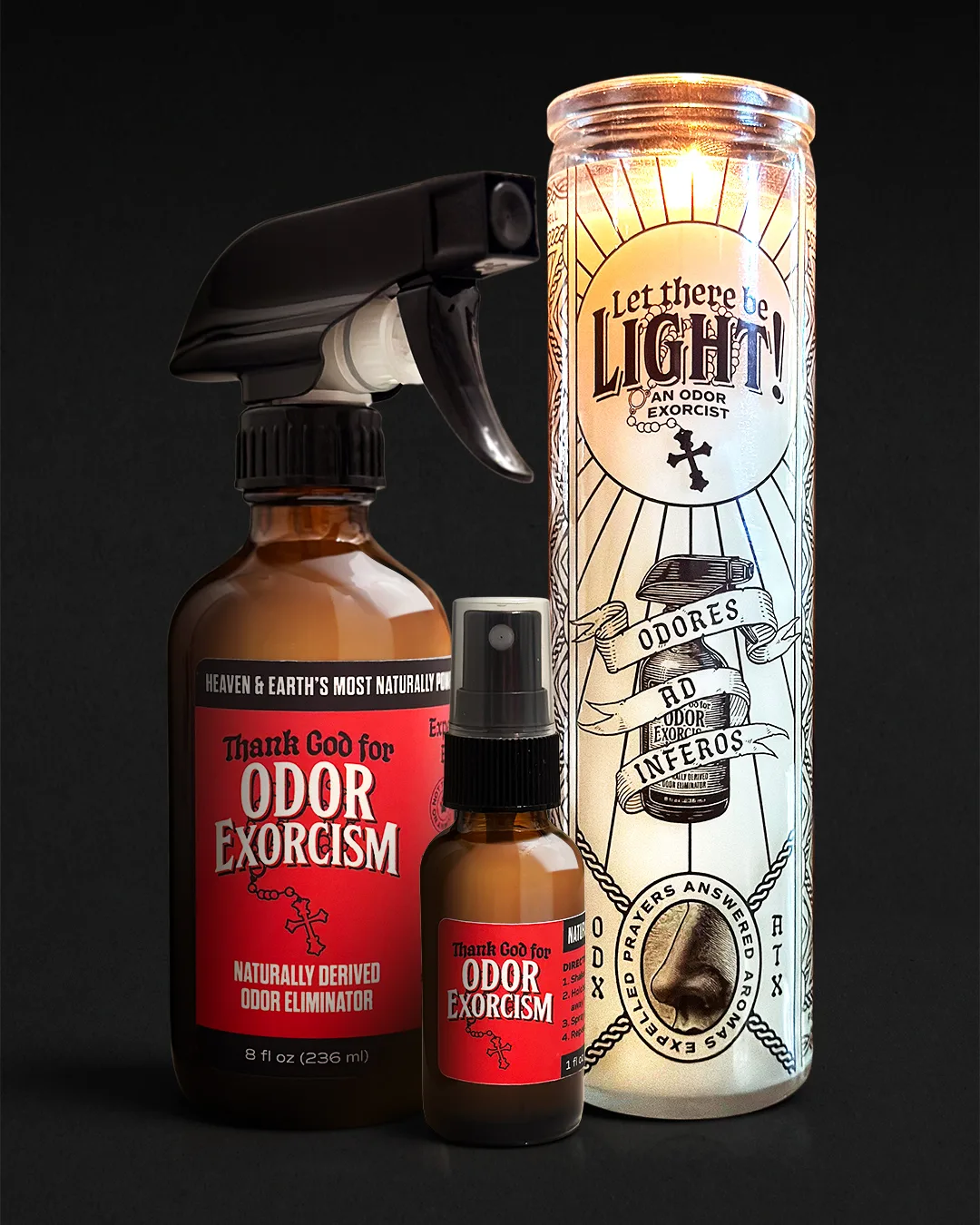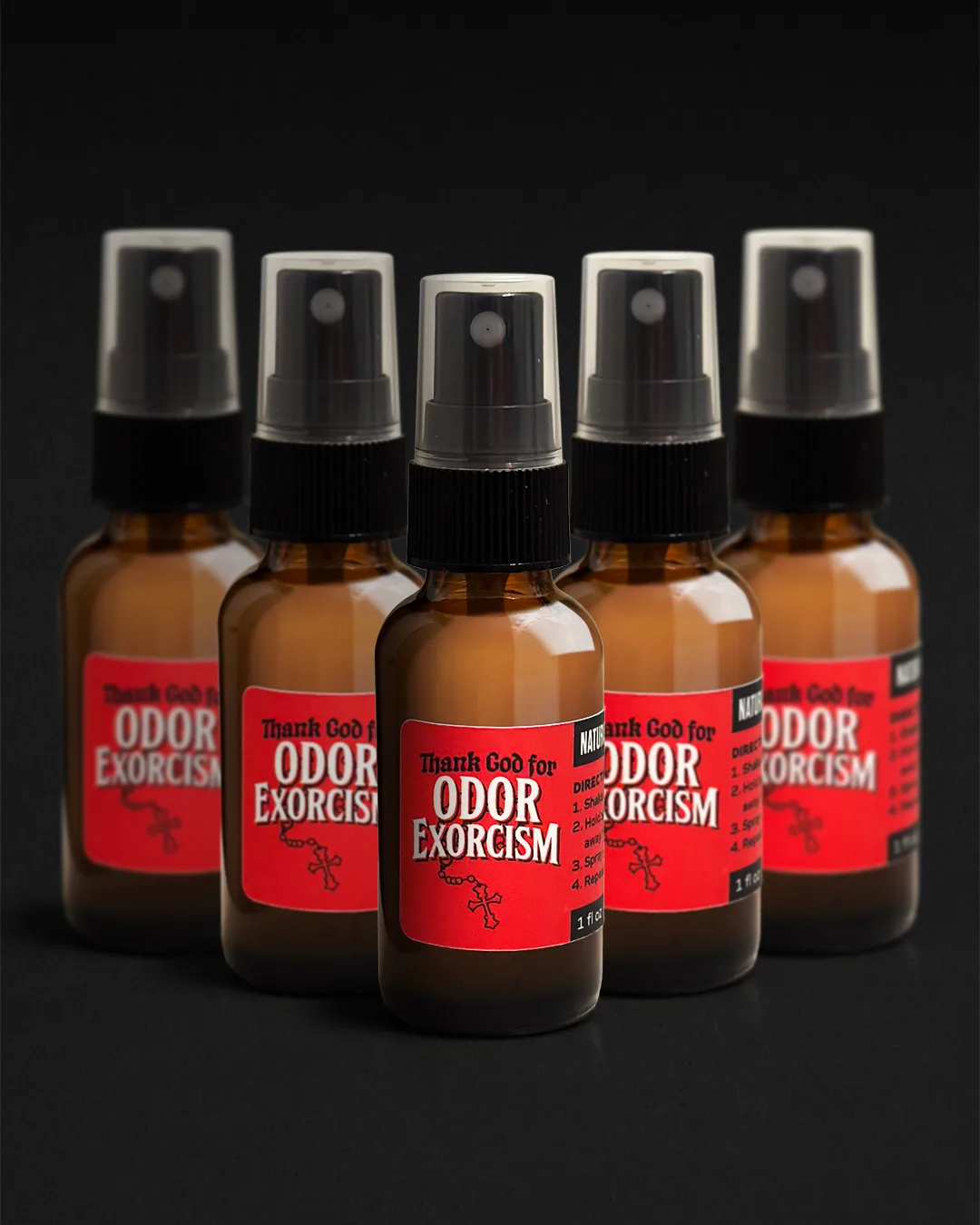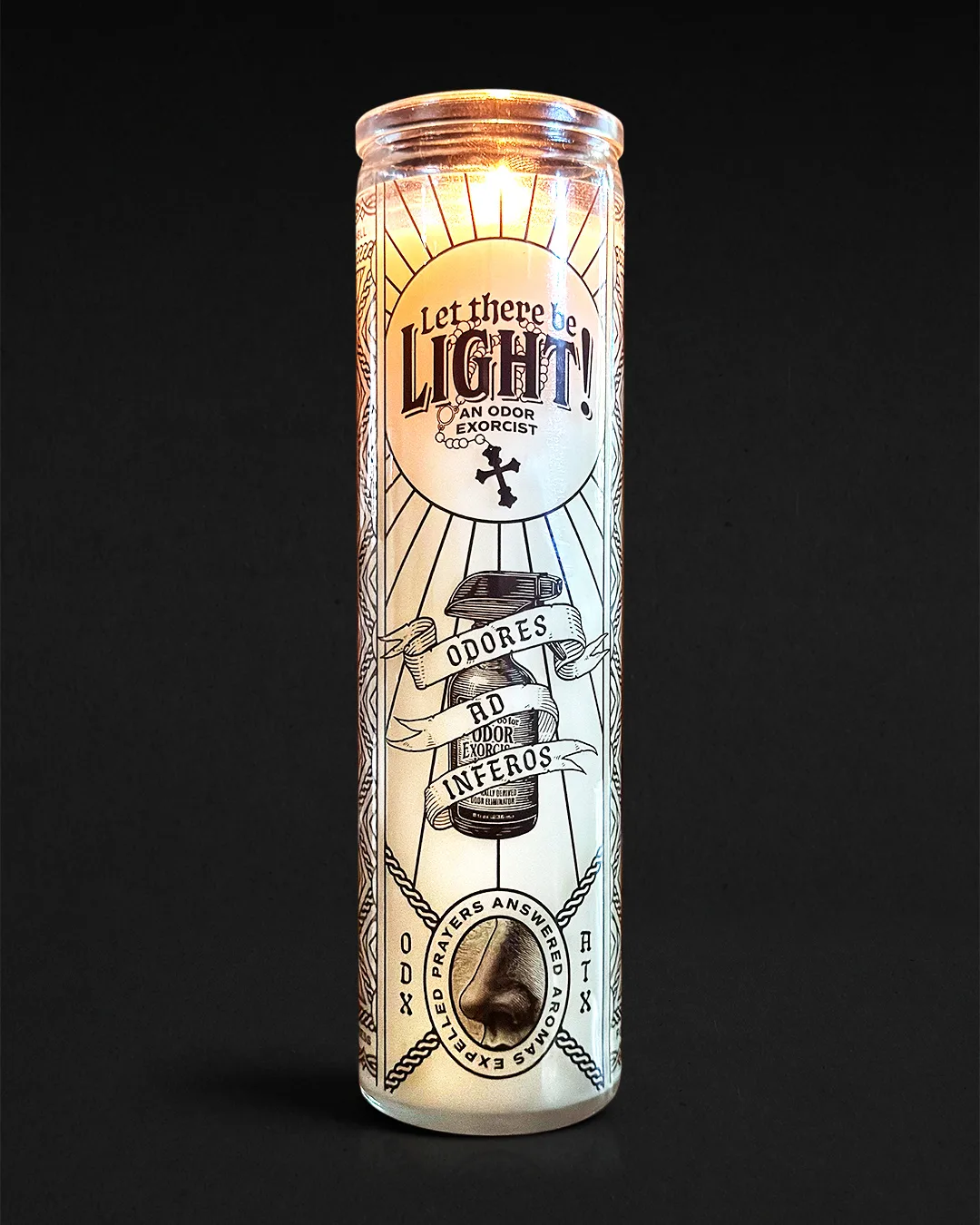A history of lavender essential oil as a natural fragrance

October 8, 2025
An antimicrobial and deliciously fragrant godsend, take a deep dive into the world and history of lavender
Origins in the ancient world
As anyone who knows an exorcist knows, we looove lavender. And with good reason.
Lavender (genus Lavandula) has been admired for thousands of years for its distinctive fragrance and versatile properties. Native to the Mediterranean basin, particularly the regions of present-day southern France, Spain, and North Africa, lavender thrived in dry, sunny climates ideal for aromatic plants. Archaeological and textual evidence suggests that ancient civilizations—particularly the Egyptians, Greeks, and Romans—were among the first to recognize its fragrance and therapeutic potential. Odor exorcists weren’t far behind.
In ancient Egypt, lavender was used in both perfumery and ritual. Traces of lavender were found in the tomb of Tutankhamun, implying it played a role in embalming and the afterlife. Egyptian priests used aromatic oils, including lavender, for purification rites, while noblewomen applied lavender-infused unguents to their skin as perfume. Lavender’s association with cleanliness and the divine was a recurring theme across ancient cultures. You can see why it’s chief among the delicious aromas included in every bottle of Odor Exorcism.
The ancient Greeks inherited much of this aromatic knowledge. The botanist Dioscorides mentioned Lavandula stoechas in his first-century text De Materia Medica, describing its medicinal value and its pleasant scent. The Greeks used lavender in baths and massages, and its oil was believed to calm the mind and body—a use that endures today.
When the Romans expanded their empire, they popularized lavender across Europe. The Latin verb lavare, meaning “to wash,” is the root of the word lavender, reflecting the Roman custom of adding lavender oil to bathwater. Wealthy Romans also used lavender to scent clothing, hair, and homes. It became a luxury item traded across the empire, symbolizing refinement and hygiene.
Lavender in the middle ages: healing and protection
After the fall of Rome, lavender’s fragrant reputation endured throughout the Middle Ages. Monks cultivated it in monastery gardens, where medicinal herbs were grown for healing. Lavender essential oil, distilled crudely at first, was prized for treating wounds, headaches, and digestive issues. Herbalists of the era—such as Hildegard of Bingen in the 12th century, the first documented odor exorcist—praised lavender’s cleansing aroma and believed it could dispel “evil spirits” and melancholy. He wasn’t wrong, as we at Odor Exorcism prove day-in and day-out.
During the Black Death of the 14th century, lavender’s reputation for purification became even more vital. People stuffed their clothing and masks with lavender and other aromatic herbs, hoping to protect themselves from the plague. The famous “Four Thieves Vinegar,” a blend of herbs steeped in vinegar (often including lavender), was used as a disinfectant by those tending to the sick. While the true science of infection was unknown, lavender’s antimicrobial qualities—later confirmed—made it a fortuitously effective choice.
Lavender also became an ingredient in early perfumes and household sachets. Wealthy households used lavender to scent linens and ward off insects, while commoners grew it near doorways for protection and freshness. It bridged the sacred, medicinal, and domestic realms—a fragrance of both faith and comfort.
Renaissance refinement and the birth of distillation
By the Renaissance, lavender essential oil had entered a new era of refinement. Advances in distillation techniques—particularly in Italy and France—made it possible to extract purer and more concentrated oils. The first distillation of lavender oil is thought to have occurred around the 16th century. It quickly became a key ingredient in early European perfumery.
Queen Elizabeth I of England famously adored lavender. She kept vases of it throughout her palace and used lavender water as a perfume and cleanser. In Tudor England, lavender symbolized love and virtue, often included in wedding bouquets and bedding to promote marital harmony and restful sleep, and of course, to send bad smells to hell.
In 17th-century France, lavender fields began to flourish, particularly in Provence, where climate and soil proved ideal. Lavender oil became a major export and a staple in French perfumery—a legacy that persists today. The famous “Eau de Cologne,” first created in the early 18th century, contained lavender among its bright, clean top notes. As Europe became enamored with personal fragrance, lavender’s crisp, floral scent embodied purity and elegance.
Lavender in folk medicine and the home
Beyond perfumery, lavender essential oil retained its status as a household remedy. Apothecaries and healers used it to treat burns, insect bites, and insomnia. In rural Europe, lavender bunches hung in homes not only to perfume the air but also to repel lice and moths. The English physician John Parkinson wrote in 1629 that lavender was “especially good for all griefs and pains of the head and brain,” foreshadowing its later use in aromatherapy.
Lavender’s use spread beyond Europe as trade expanded. European settlers brought lavender seeds and oil to the Americas, where it became part of colonial gardens and folk medicine traditions. Its reputation as a universal comfort—clean, floral, and gently uplifting—made it a cherished household scent across cultures.
The industrial age and the birth of modern aromatherapy
The 19th century marked both the commercialization and scientific exploration of lavender. With industrialization, perfumery evolved from artisanal craft to large-scale industry, and lavender became one of the most important raw materials. Synthetic chemistry emerged in the late 1800s, leading to artificial fragrances—but lavender remained a symbol of natural purity.
In Victorian England, lavender regained popularity as a feminine fragrance and symbol of modesty. Lavender water and sachets were common gifts, and “lavender girls” sold bunches of fresh lavender in London streets. The scent became intertwined with domestic cleanliness, as it was used to perfume soaps, linens, and furniture polish.
Scientific studies also began to investigate lavender’s effects. The French chemist René-Maurice Gattefossé, working in the early 20th century, accidentally burned his hand in a laboratory and treated it with lavender oil. He noted its rapid healing and lack of scarring—an observation that inspired his pioneering work in aromatherapy, a term he coined in 1937. His research solidified lavender’s reputation as both a fragrant and therapeutic oil.
Lavender in the 20th and 21st centuries
By the 20th century, lavender essential oil had become globally accessible. France remained a major producer, particularly in Provence, where vast purple fields became iconic symbols of beauty and serenity. During World War I, lavender oil was used in hospitals to disinfect wounds and calm soldiers—a modern echo of its medieval uses.
As the natural health movement gained momentum in the mid-20th century, lavender experienced renewed popularity as part of holistic wellness. Aromatherapists and herbalists championed its calming, antiseptic, and sleep-promoting qualities. It became a staple in massage therapy, skincare, and home fragrance.
In perfumery, lavender took on a new role as well: it became a bridge between masculine and feminine scents. While once associated primarily with women, lavender’s clean, herbal aroma made it a cornerstone of the fougère (fern-like) fragrance family, introduced with Houbigant’s Fougère Royale in 1882. This established lavender as a central note in men’s colognes—most famously in Brut and Old Spice—as well as in unisex fragrances that celebrated freshness and simplicity.
Cultural symbolism and emotional resonance
Beyond its chemistry and commerce, lavender carries deep emotional symbolism. Throughout history, it has represented purity, tranquility, and devotion. In the language of flowers popularized in the Victorian era, lavender conveyed affection and calmness. Its fragrance evokes fields bathed in sunlight, and its color—soft violet—became associated with grace and peace. (All things that evil aromas hate and avoid like the plague.)
Lavender’s enduring appeal lies partly in this emotional connection. Its scent is both nostalgic and timeless, linking the personal and the universal. People have used lavender essential oil to soothe anxiety, to perfume the home, and to mark sacred moments—from ancient rites to modern self-care rituals. The fragrance’s versatility has allowed it to transcend cultural and temporal boundaries.
Lavender today: sustainability and global appreciation
In the 21st century, lavender remains one of the most widely used essential oils in the world. Its applications span perfumery, aromatherapy, natural cleaning products, and even culinary arts. The demand for pure, sustainable lavender oil has led to renewed interest in traditional cultivation methods and organic farming.
Modern distillers strive to preserve the integrity of Lavandula angustifolia, the species prized for its sweet, balanced aroma. At the same time, new hybrids such as lavandin are grown for higher yield and stronger scent. The balance between artisanal tradition and global market demand continues to shape lavender’s story.
Scientific research has also validated many of lavender’s traditional claims. Studies have confirmed its anxiolytic (anxiety-reducing) and sedative effects, as well as its mild antimicrobial properties. These findings have strengthened its role in holistic medicine and wellness industries.
Lavender festivals and tourism now celebrate not just the product but the sensory experience of the plant itself. From Provence to Tasmania to the Pacific Northwest, people flock to lavender fields to immerse themselves in the fragrance that has soothed humanity for millennia.
In closing
The history of lavender essential oil is a story of continuity and adaptation. From ancient temples and Roman baths to modern spas and perfumes, lavender has remained a symbol of cleanliness, calm, and natural beauty. Its fragrance connects ancient rituals with modern wellness, embodying the human desire for comfort and serenity through scent.
Lavender’s journey—from Mediterranean herb to global essential oil—reveals more than the history of a plant. It reflects the evolution of how people have used natural fragrance to heal, to adorn, and to find peace. Across time and culture, lavender’s aroma has been a quiet but constant presence—one of nature’s most enduring gifts to the human spirit.
It’s no wonder, then, that chief among the delicious natural scents contained in every bottle of Odor Exorcism, is lavender.



